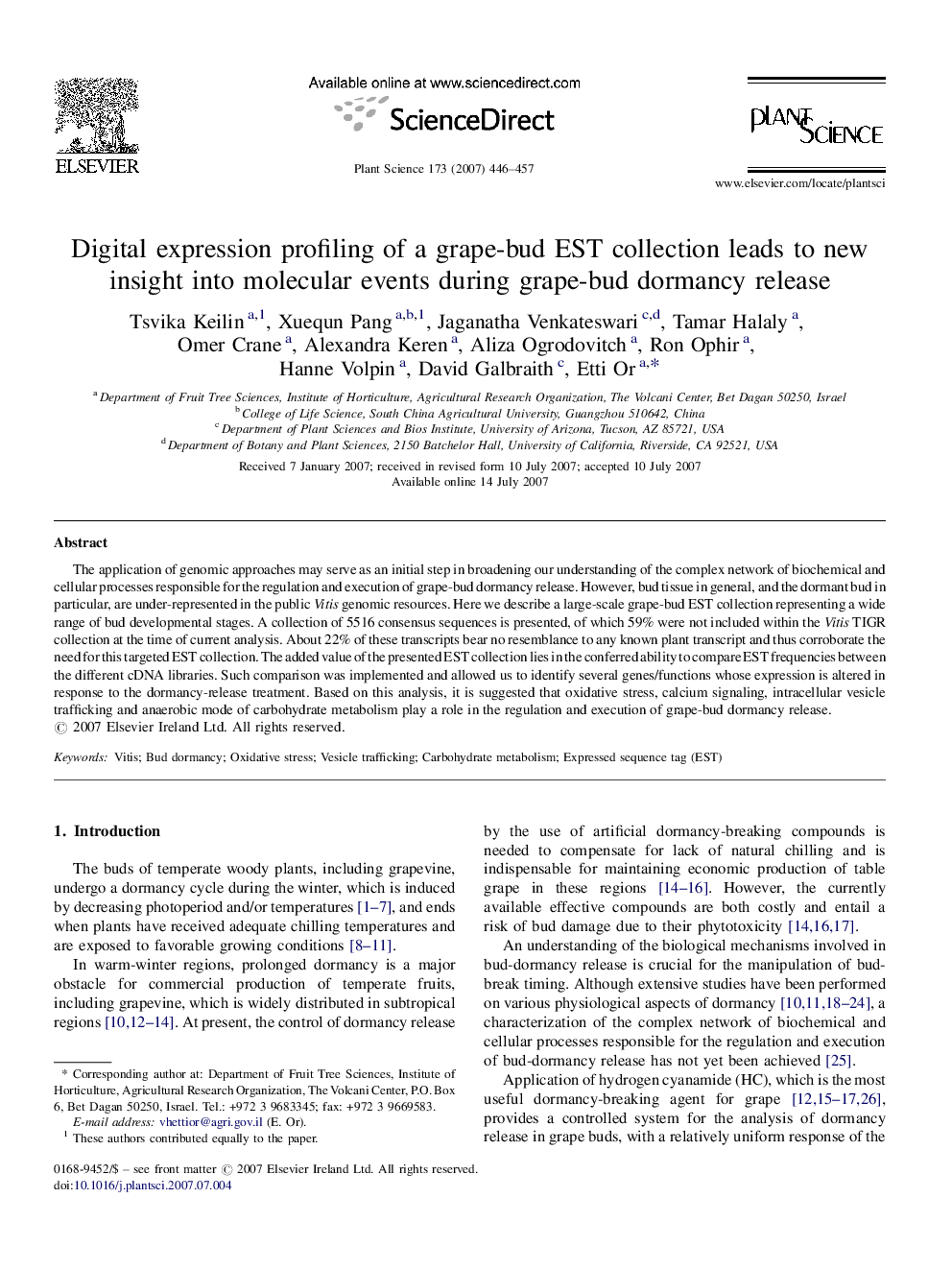| Article ID | Journal | Published Year | Pages | File Type |
|---|---|---|---|---|
| 2018681 | Plant Science | 2007 | 12 Pages |
The application of genomic approaches may serve as an initial step in broadening our understanding of the complex network of biochemical and cellular processes responsible for the regulation and execution of grape-bud dormancy release. However, bud tissue in general, and the dormant bud in particular, are under-represented in the public Vitis genomic resources. Here we describe a large-scale grape-bud EST collection representing a wide range of bud developmental stages. A collection of 5516 consensus sequences is presented, of which 59% were not included within the Vitis TIGR collection at the time of current analysis. About 22% of these transcripts bear no resemblance to any known plant transcript and thus corroborate the need for this targeted EST collection. The added value of the presented EST collection lies in the conferred ability to compare EST frequencies between the different cDNA libraries. Such comparison was implemented and allowed us to identify several genes/functions whose expression is altered in response to the dormancy-release treatment. Based on this analysis, it is suggested that oxidative stress, calcium signaling, intracellular vesicle trafficking and anaerobic mode of carbohydrate metabolism play a role in the regulation and execution of grape-bud dormancy release.
